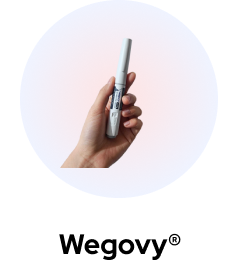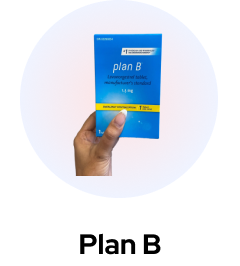Rybelsus and Ozempic are both semaglutide based medications developed by Novo Nordisk. But which one is better for you to use?
In this article, we’ll cover:
- What Rybelsus is
- What Ozempic is
- What’s in both of these drugs
- The main differences between them
- The benefits of using both
- Whether or not Rybelsus is as effective as Ozempic
- The dosage differences between the two
- How effective these drugs are for the treatment of type-2 diabetes
- Frequently asked questions.
Ready to learn more about Rybelsus and Ozempic? Let’s get started!
What Is Rybelsus?
Rybelsus is an oral form of semaglutide, designed for the treatment of type-2 diabetes. It is an oral form of GLP-1 (glucagon-like peptide-1) receptor agonist, approved by Health Canada.
GLP-1 is one of the hormones that works to regulate your blood sugar levels. When you eat, your body naturally releases it, which in turn enables your pancreas to produce insulin. This also slows digestion.
Rybelsus mimics this hormone’s actions, which helps to manage blood sugar.
As well as helping with blood sugar control, results in a number of studies have shown that Rybelsus shows promise in assisting with weight management, especially when combined with a healthy diet and exercise.
What Is Ozempic?
Ozempic is an injectable form of semaglutide. It was developed as a method for type-2 diabetics for glycemic control, however, a positive side effect is its ability to assist obese patients (those with a BMI of 27 or over) with weight management. It does this by sending messages to the brain around hunger, as well as slowing gastric emptying.
As with Rybelsus, best results are obtained when Ozempic is combined with a healthy diet and exercise.
Like Rybelsus, Ozempic is a GLP-1 receptor agonist, and works to manage blood sugar by mimicking the function of the LP-1 hormone.
It has also been shown to assist individuals who are at high risk for major cardiovascular events. This includes significant improvements in high blood pressure, high triglycerides, and high cholesterol.
Ozempic only has approval for use by those with type-2 diabetes or a BMI of 27 and above.
What’s in Rybelsus and Ozempic?
The active ingredient in both weight loss drugs Rybelsus and Ozempic is semaglutide. Along with another semaglutide-based medication, Wegovy, they work to mimic the function of the GLP-1 hormone in the body in order to regulate blood sugar.
In the case of Rybelsus, as well as semaglutide, the tablets contain inactive ingredients mannitol and magnesium stearate, which help the drug’s absorption.
Along with semaglutide, Ozempic also contains ingredients phenol and water, which help to stabilize the medication for injection.
Rybelsus vs. Ozempic
The main difference between Rybelsus and Ozempic is how you take them. In terms of effects, they have many similarities.
Rybelsus is unique as, unlike most GLP-1 receptor agonists, it is taken orally. This is recommended for patients who are averse to injections. It needs to be taken once a day, and works throughout the day to regulate blood sugar levels.
Ozempic is an injectable form of the same active ingredient, semaglutide. It needs to be administered subcutaneously once a week, and comes in pre-dosed pens in a range of different concentrations. For type-2 diabetes, Ozempic is preferred over and provides greater benefits than Rybelsus.
While Ozempic has similar efficacy to Rybelsus, there are some key differences in administration, and in various trials, data has shown that Ozempic has better outcomes for participants than Rybelsus.
The medications also differ in their cost. Rybelsus tends to be cheaper than Ozempic, although pricing depends on a variety of factors including insurance coverage, location, and the particular pharmacy.
Neither drug is suitable for use in those with type-1 diabetes.
Who Should Use These Drugs?
Rybelsus and Ozempic are prescription drugs used primarily for adults with type 2-diabetes, who struggle to control their blood sugar levels using typical diabetes medications like metformin.
A recent study (among others) evaluated that they are both beneficial for patients who need assistance with their weight management, particularly when combined with a diet of healthy food and exercise.
The medications are not suitable for everyone, however. Ozempic is contraindicated for a number of other medications, including herbal supplements and vitamins. Rybelsus has a number of contraindications, as well. That’s why it’s especially important to discuss your full medical history with your medical team before starting the drug.
Semaglutide is associated with a risk of medullary thyroid carcinoma (MTC), which is why those with a family history of either MTC or Multiple Endocrine Neoplasia syndrome type 2 (MEN 2) should avoid both drugs.
Others who should avoid semaglutide medications include type-1 diabetics, and those with a history of pancreatitis. Additionally, if you are pregnant or planning to conceive, you should discuss your use of these drugs with your medical team.
No medication is without side effects, and it’s important to be aware of the side effects that can occur with both of these semaglutide-based medications.
Ozempic and Rybelsus can both cause several types of gastrointestinal issues, including:
- Nausea
- Vomiting
- Constipation
- Diarrhea
- Stomach pain
- Loss of appetite.
These side effects are most commonly reported when just starting the medication or increasing the dose.
Other rarer but more serious side effects include:
- Changes in vision
- Kidney issues
- Pancreatitis
- Gallbladder issues
- Allergic reactions.
Patients need to be vigilant and monitor for these symptoms while using the medication.
If any of these more serious side effects occur, you should stop your use of the drug immediately and contact your medical team, or go straight to your local ER.
Benefits of Using Rybelsus or Ozempic
While each individual needs to discuss the benefits vs. risks with their medical team, both Rybelsus and Ozempic have been shown to have a variety of benefits for patients. These include lowerin g blood sugar levels, aiding with weight management, and reducing the risk of heart disease.
Lowering Blood Sugar Levels
Both Rybelsus and Ozempic have been shown to be effective at lowering blood sugar. They are GLP-1 receptor agonists, which means they mimic the action of the GLP-1 hormone.
This hormone stimulates the pancreas to produce insulin when blood sugar is high, and slows gastric emptying to prevent blood sugar spikes after eating.
This helps patients achieve their A1C goals, reducing the risks that go along with long term hyperglycemia.
Managing Weight Loss
Both medications have been shown to have potential to aid with weight management, thanks to the appetite suppressant qualities of GLP-1 receptor agonists.
The appetite suppression caused by delayed gastric emptying means that patients can have a reduced caloric intake, which leads to improvements in weight management over time. Combining this with a healthy diet and exercise yields better results than simply taking either drug on its own, nor is this recommended.
Reducing the Risk of Heart Disease
Heart disease is a big issue for people with diabetes, as they are at higher risk for heart attacks and strokes. Research shows Ozempic and other GLP-1 agonist drugs can reduce the risk of major cardiovascular events, including heart attack, stroke, and death.
Semaglutide-based drugs can also help to reduce the risk of heart disease by helping with a reduction in excess body weight, as obesity is a well-known risk factor for heart disease.
Thus, this presents a viable alternative to other drugs on the market, or weight management treatments, such as bariatric surgery.
Is Rybelsus as Effective as Ozempic?
While both medications have the same active ingredient, there are some differences in terms of their effectiveness.
Both have been shown to help manage blood sugar levels and assist weight loss, as well as lower A1C levels.
However, the injectable form of semaglutide, Ozempic, is more effective than Rybelsus at lowering blood sugar.
This may be because Ozempic is available at higher doses — the highest oral dose of Rybelsus available is the equivalent to the 0.5 mg dosage of Ozempic (the second-lowest dosage available).
Dosage Differences Between Rybelsus and Ozempic
Because Rybelsus is taken orally and Ozempic is an injectable, the dosage differs from each other significantly.
Rybelsus is typically started at a dose of 3 mg once daily for 30 days. After the initial 30 days, the dose is increased to 7 mg once daily.
Based on individual patient blood sugar control and tolerability, the dose may be further increased to a maximum of 14 mg once daily.
It needs to be taken on an empty stomach first thing in the morning.
Ozempic, on the other hand, is started at a dose of 0.25 mg injected subcutaneously (under the skin into the fatty layer of tissue) once weekly.
After 4 weeks, this dose is increased to the maintenance dose of 0.5 mg once weekly. If necessary for further blood sugar control, it is also available in concentrations of 1 mg and 2 mg.
Although the dosage of Rybelsus sounds far higher than Ozempic, this is because the absorption of oral medication is less effective than injected medication. In fact, the highest oral dose of Rybelsus, 14 mg, is comparable to the 0.5 mg weekly dose of Ozempic.
There is currently no dosage of Rybelsus that is equivalent to the Ozempic 1 mg and 2 mg doses.
How Effective are Ozempic and Rybelsus for Treating Type 2 Diabetes?
Semaglutide-based medications have been found to be effective at managing blood sugar in type 2 diabetics. Studies have shown that they provide reductions in A1C and fasting blood glucose levels, which helps with blood sugar control. Neither drug has worse outcomes than the other in any great amount.
Both medications have also been found to help with heart disease, which is often a problem for type 2 diabetics. They’ve both also shown positive results with aiding weight management, which is a risk factor for a variety of poor health outcomes.
Switching Between Rybelsus and Ozempic
There is no real reason to switch between Rybelsus and Ozempic, unless you prefer one over the other or there are cost benefits.
You should note that if you’re taking Ozempic, your health insurance will only cover its use for the treatment of type-2 diabetes or for weight management in those with a BMI of 27 or over.
If you switch between the drugs, you need to make sure you’re taking the equivalent dose — 14 mg of Rybelsus is equivalent to 0.5 mg of Ozempic.
Key Takeaways
Rybelsus and Ozempic are both GLP-1 agonists that contain the active ingredient semaglutide. Both were developed to help type 2 diabetics with blood sugar control, but have been found to have significant weight management benefits as well.
The main difference between the two is the administration method — Ozempic is injected subcutaneously, while Rybelsus is taken orally.
Both medications have the potential to cause side effects, and neither causes more side effects than the other. These are primarily gastrointestinal, including nausea, diarrhea, constipation, and stomach pain.
Patients using either Rybelsus or Ozempic will also need to look out for serious side effects, including kidney issues, pancreatitis, and thyroid tumors, though these are rare. If you have a history of MTC or MEN 2 you should not use either drug.
Both medications have been found to reduce heart disease risks as well as helping with blood sugar and weight management, particularly when combined with other positive lifestyle changes, such as a healthy diet and regular exercise.
The choice between the medication will depend on patient preference, availability and cost, as well as dosage — Ozempic is available in a higher equivalent dose than Rybelsus.
FAQs
What factors to consider when choosing between Rybelsus and Ozempic?
You’ll need to decide this based on advice from your medical team, but some factors to consider are:
- Availability
While there are currently no known shortages of semaglutide medications, increased interest, particularly in Ozempic, could lead to a shortage.
- Administration
If you have a phobia of needles, you may prefer to take the medication by mouth
- Cost
Rybelus may be cheaper in some circumstances
- Dosage
Ozempic is available in higher dosages than Rybelsus, so if you need a higher dose Ozempic will be preferable.
Can Rybelsus and Ozempic be used simultaneously?
Because both medications contain the same ingredient, they should not be used in combination as you can risk taking too much, leading to an overdose.
If you need to switch between medications, make sure you are taking the correct equivalent dose.
Are there any long-term side effects of Rybelsus and Ozempic?
Long-term side effects of Rybelsus and Ozempic are still under investigation, as these are relatively new medications.
Most side effects noted in studies are gastrointestinal, and include nausea, vomiting, diarrhea, and constipation. These usually subside over time.
However, as GLP-1 receptor agonists, both Rybelsus and Ozempic carry a possible risk of medullary thyroid carcinoma (MTC), a rare form of thyroid cancer. This risk has been seen in animal studies with GLP-1 receptor agonists but has not been confirmed in humans. In addition, these medications may be associated with an increased risk of pancreatitis.













 (US)
(US)